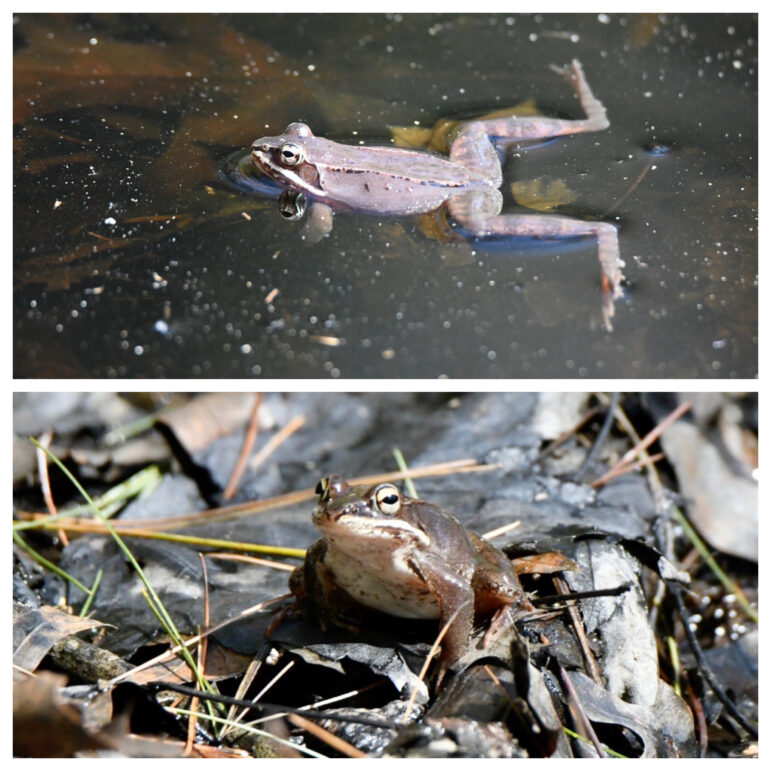These March evenings I am straining my ears to hear the spring peepers as they call and signal that spring is around the corner. But there is another local frog who often plays second fiddle to the notorious peepers as a harbinger of spring. The humble wood frogs will soon join in, revving it up in vernal pools across town. Wood frogs are mostly terrestrial amphibians with a fetching black mask and beautiful brown skin. They have emerged from a winter’s hiatus where their hearts may have stopped beating since their bodies produce fluids that act as special antifreeze. So, their winter sojourn in the leaf litter is now a thing of the past as the vernal pools call their name. They answer that call and head to these transient bodies of water driven by the need to procreate, and they are not quiet about it.

The wood frog’s version of pillow talk sounds like quacking, and it can be heard throughout the day and into the evening. These diminutive frogs keep one eye open while luring a mate so if you don’t tread lightly they clam up until the coast is clear. Uninterrupted, they lock eyes and limbs with a mate within the confines of the vernal pool. The female lays masses of over 1,000 eggs which she attaches to a carefully chosen stick. Then her job is done as she heads for the hills hoping that the hands off approach to parenting will work as well for her offspring as it did for her.
For years, when I taught first grade, a highlight of spring was the arrival of wood frog eggs so we could study the life cycle unit of our science curriculum. Each classroom would set up a tank at the back of the room, and the hum of a filter would permeate the class and the waiting would begin. Then a call from the office would come when the eggs had arrived from the lab, and we would sashay down and gently carry our precious cargo to our room. I would carefully set our mass of frog spawn down into the water while 20 pairs of pint-sized eyes peered through the glass. There was no shortage of excitement as the wood frog lifecycle was to be unveiled. Change was a brewing. The egg mass would hatch, and over time the tiny tadpoles would grow. Legs would sprout and tails would be absorbed, and before we knew it they were full-fledged frogs. The great metamorphosis would have occurred all in an antiquated fish tank at the back of a classroom.
Some years I got a little carried away and felt that our little tadpoles deserved a more natural diet other than boiled iceberg and packaged tadpole flakes. So, I would hit the swamps and bring a bucket of pond weed into the classroom to add to the tank. The tanks looked more natural with every shade of green, and I figured the tadpoles would be much happier. But one year I unknowingly added a few leeches to the tank ,and they had a field day with the growing tadpoles. That year, in addition to learning about life cycles, we learned about the dog-eat-dog world. I guess both of those lessons are worth teaching!
Video by Joan Heffernan